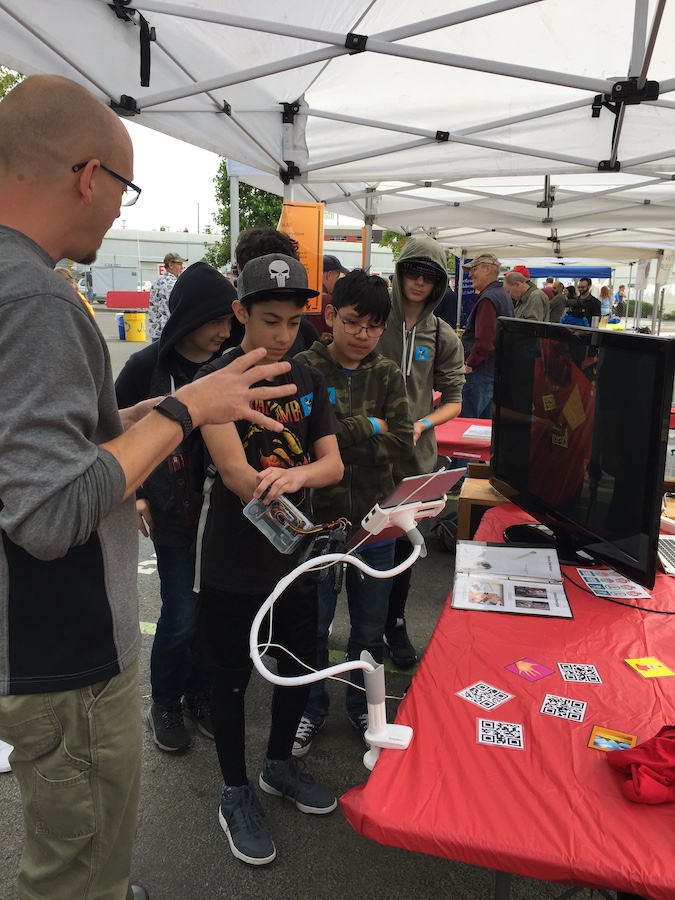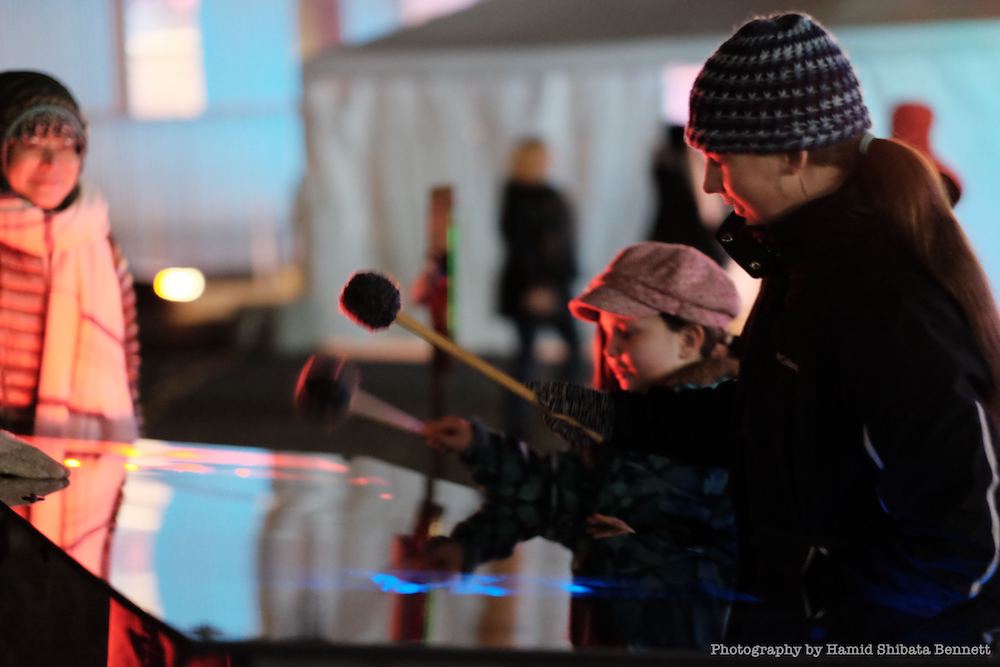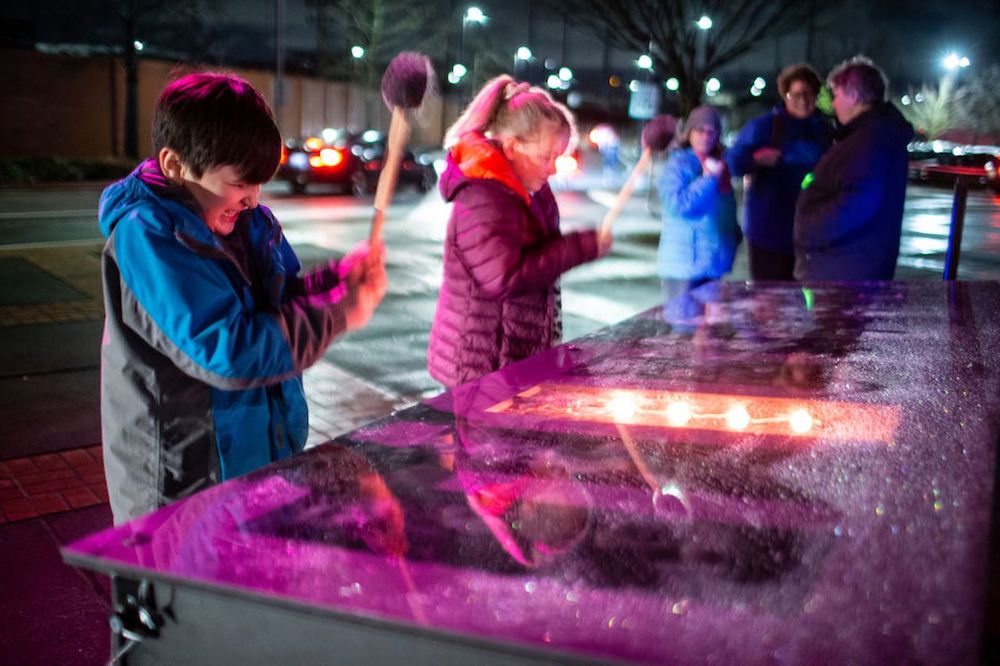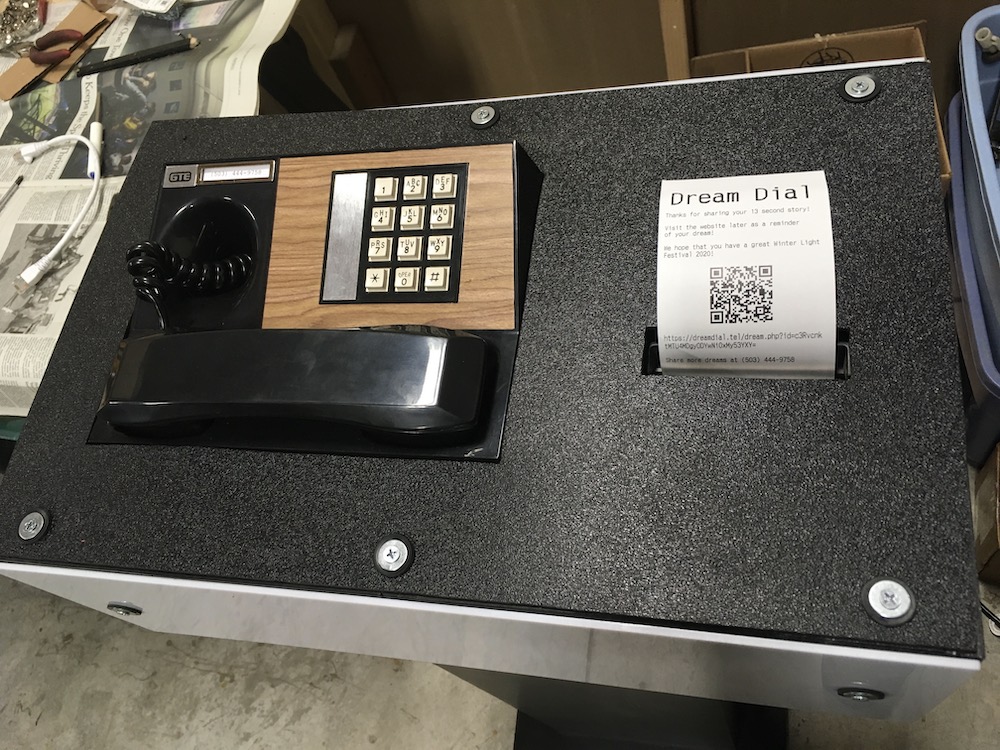Catch the Wave!
Oregon Science Festival 2023 Application
Overview
The project is a physical demonstration of how sound recording and playback works. Participants will gain an understanding of how electrical signals and sound can be converted to one another, what sound waveforms really are, and will get to create and visualize their own sound waveforms.
Description
The project is meant to be a series of physical stations on tables within the space. Currently, the plans for the stations are as follows:
-
Demo of electrical current moving a magnet (how a speaker works)
Participant can turn a dial, engaging a coil of wire with a spring-loaded bar magnet within with varying amounts of current. The magnet moves longitudinally through the coil different distances back and forth depending on the current. At the same time, a small screen shows the ins-and-outs of the magnet as ups-and-downs in a (low frequency) waveform graph that is scrolling by. Visuals explain that the magnet moving in a speaker move the speaker’s vibrating membrane, which eventually moves air at the listener’s eardrum.
-
Demo of physical movement creating current (basics of how a microphone works)
The inverse of the first station, the participant can push on a membrane which moves a coil of wire over a magnet. This generates a measurable electrical signal, which will be visualized rolling by on a screen, similar to the first station.
-
Demo of actual sound waveform (how waves create sound)
Here, a sound waveform (such as a square wave) is shown on a screen, as well as an indication of how many cycles per second (Hertz) at which the wave is being created. When a button is pressed, a speaker outputs the corresponding tone which is played at an audible frequency such as 440Hz. The participant can turn a dial to one of a few predefined waveforms (square, sine, triangle, sawtooth, noise) to hear the differences, as well as turn a second dial to change the frequency within the audible range.
-
Creating an actual sound waveform (how sound creates waves)
The last station features a similar screen to the others, showing a waveform that loops while a button is pressed, creating a sound. A second button can be pressed to reset the looping waveform to one of the predefined ones from the previous station, and a third button can be pushed to “dub in” an actual microphone recording over what’s shown on the screen. Then, the edited waveform is begun looping, so that the combination of a previously-known waveform (if any of it is left) along with the overdubbed waveform is looped continuously out of the speaker. The participant can see the relative complexity of a real audio waveform and how electrical signals can be used to capture and play it back.
Design and construction
The stations will be rugged, created in a combination of plywood, transparent polycarbonate, and electronics. We have experience building robust exhibits that are exposed to large numbers of people without constant direct supervision.
Station concept drawing

Other details
We plan to hand out wearable Catch the Wave! stickers or buttons that participants can take and wear, spreading awareness of the exhibit as well as reinforcing the concepts learned.
Designer/submitter
Justin Miller (Fusion Industries LLC) is a multidisciplinary technologist with over 25 years of experience in open source software development as well as over 5 years of experience in hardware, electronics, and interactive installations.
Justin created two different installations for Winter Light Festivals 2019 and 2020 (Chromakey, an 8-foot light-up electronic xylophone played with timpani mallets, and Dream Dial, an interactive kiosk with a retro touchtone phone which recorded and played back audio stories) and concepted and staffed a booth at the Portland Mini Maker Faire 2018 (Hands-On AR, an interactive augmented reality exhibit). Chromakey was also featured at the Portland Children’s Museum Building Bridges Family Music Festival in 2019.
Justin has spoken and presented worldwide dozens of times at technical conferences and meetups in the past 15+ years, has appeared on television, and is comfortable interacting with members of the public at all ages and technical levels.
Photos
These are photos of past creations since Catch the Wave! is yet to be built.

Hands-On AR (Portland Mini Maker Faire 2018)

Chromakey (Portland Winter Light Festival 2019-2020)

Chromakey (Portland Winter Light Festival 2019-2020)

Dream Dial (Portland Winter Light Festival 2020)